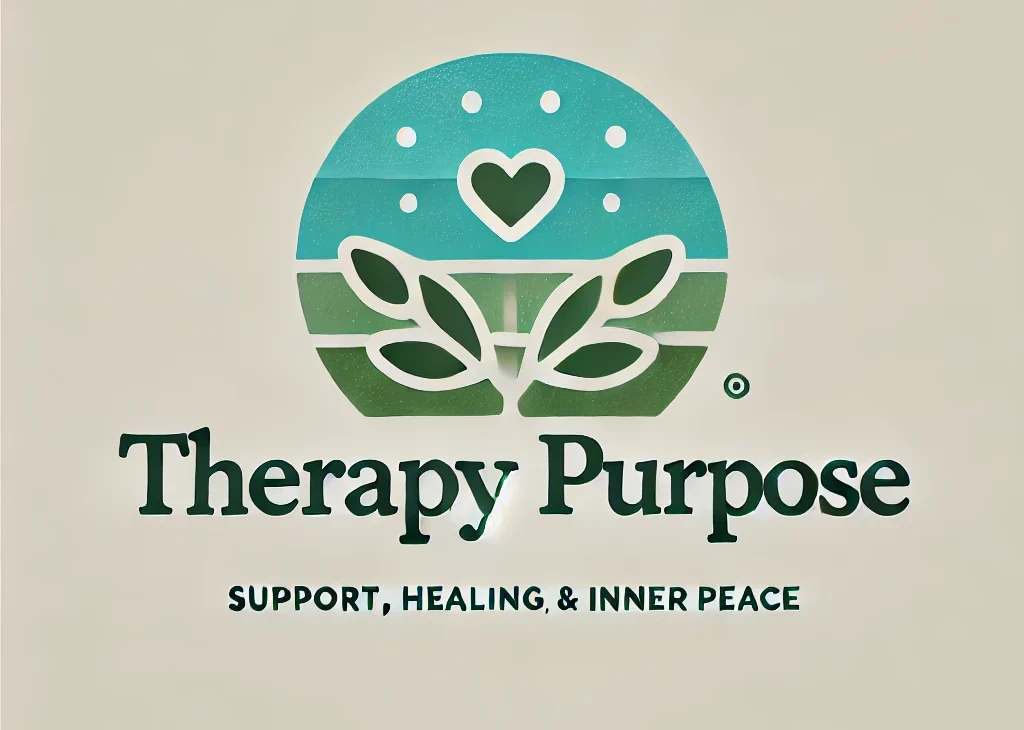Art therapy offers a unique approach to healing by utilizing creativity as a powerful tool for emotional expression and mental well-being. As more individuals seek out avenues for personal growth, the demand for "Art Therapy Near Me" continues to rise. This therapeutic practice not only fosters self-discovery but also promotes resilience and coping strategies. In this post, we will explore the benefits of art therapy, how to find local providers, and various techniques that contribute to emotional healing, making it a valuable resource for individuals of all ages.
Understanding Art Therapy and Its Benefits
Art therapy is a unique form of therapy that utilizes creative processes, such as drawing, painting, and sculpting, to help individuals express themselves and facilitate emotional healing. Below are some key benefits that highlight why you might want to explore "Art Therapy Near Me":
- Enhanced Self-Expression: Engaging in artistic activities allows individuals to communicate feelings that may be difficult to verbalize.
- Reduction of Anxiety and Stress: Creating art has been shown to lower stress levels, providing a calming effect through the creative process.
- Improved Emotional Awareness: Art therapy helps individuals recognize and understand their emotions better, paving the way for healing.
- Therapeutic Relationships: Collaborating with a qualified art therapist cultivates a supportive space for personal growth.
In summary, "Art Therapy Near Me" not only promotes self-expression but also provides significant emotional benefits, making it an effective tool for healing and personal development. Exploring nearby art therapy options can enrich your life and enhance emotional well-being.
Finding Local Art Therapy Providers
When it comes to exploring Art Therapy Near Me, identifying local providers is key to accessing this healing journey. Here are some effective steps to help you find qualified art therapists in your community:
Online Search: Type “Art Therapy Near Me” into your favorite search engine. Look for therapists listed in directories or review platforms.
Professional Associations: Check organizations like the American Art Therapy Association, which can help link you to certified professionals in your area.
Community Resources: Visit local community centers, hospitals, or mental health clinics that may offer art therapy programs or referrals.
Social Media and Local Groups: Leverage platforms such as Facebook or Meetup to discover local art therapy workshops or support groups.
Comparison of Different Local Providers:
| Type of Provider | Pros | Cons |
|---|---|---|
| Private Practices | Personalized care | Higher costs |
| Community Centers | Often affordable | Limited availability |
| Hospitals | Medical support | May be less creative-focused |
| Online Therapy Options | Flexible scheduling | Less personal interaction |
Now that you know how to find Art Therapy Near Me, start reaching out to providers and explore your options for a creative healing experience!
Types of Art Therapy Techniques
Art therapy offers a diverse array of techniques to cater to individual needs and preferences. Each technique promotes creativity and emotional expression, making it easier to navigate personal challenges. Here are some common types of art therapy techniques you’ll find in "Art Therapy Near Me" programs:
Drawing and Painting
- Encourages spontaneous expression.
- Utilizes colors and shapes to communicate feelings.
Collage and Mixed Media
- Combines various materials to reflect personal narratives.
- Allows for exploration of different textures and forms.
Sculpture and 3D Art
- Engages the tactile senses.
- Provides physical interaction with materials.
Photography
- Captures significant moments and emotions.
- Facilitates self-exploration through visual storytelling.
Creative Writing
- Uses poetry or storytelling to articulate thoughts and feelings.
- Can pair with visual art for deeper insight.
Each of these techniques plays a crucial role in fostering emotional healing and self-discovery. By exploring "Art Therapy Near Me," individuals can find the right method that resonates with them and their unique journey.
How Art Therapy Aids Emotional Healing
Art therapy serves as a powerful tool for emotional healing by enabling individuals to express and process their feelings. Through creativity, participants engage in a therapeutic journey that offers numerous benefits, including:
Emotional Expression: Art provides a safe outlet for feelings that may be difficult to verbalize. Individuals can explore their emotions through various mediums, such as drawing, painting, or crafting.
Stress Relief: Engaging in creative activities reduces anxiety and promotes relaxation. This can lead to lower stress levels and an improved mood.
Self-Discovery: Participants often gain insight into their thoughts and behaviors, fostering a deeper understanding of themselves.
Skill Development: Art therapy encourages the development of coping skills and enhances resilience against emotional challenges.
To find Art Therapy Near Me, consider local mental health clinics, community centers, or certified art therapists. By exploring this transformative approach, individuals can embark on a journey of self-discovery and emotional well-being, ultimately leading to a more fulfilling life.
The Role of Art Therapy in Mental Health Treatment
Art therapy plays a significant role in mental health treatment by providing a unique avenue for self-expression and emotional processing. Here’s how it contributes effectively:
- Expressive Outlet: Through creative activities, individuals can express feelings that may be difficult to articulate verbally.
- Stress Reduction: Engaging in art can relieve anxiety and stress, promoting relaxation and well-being.
- Building Self-Esteem: Completing art projects fosters a sense of accomplishment, boosting self-esteem and confidence.
- Trauma Processing: Art therapy allows individuals to explore and process traumatic experiences in a safe environment.
Benefits Compared to Traditional Talk Therapy
| Aspect | Art Therapy | Traditional Talk Therapy |
|---|---|---|
| Communication Skill | Encourages non-verbal expression | Focuses on verbal articulation |
| Emotional Exploration | Facilitates deeper emotional insight | Might not address emotions visually |
| Engagement | Hands-on and creative | Discussion-based |
| Enjoyment | Fun and engaging | Often more structured |
By integrating Art Therapy Near Me into mental health services, individuals can find a complementary approach to traditional therapies, enhancing their treatment and promoting a holistic healing process.
Incorporating Art Therapy into Daily Life
Integrating Art Therapy Near Me into your daily routine can enhance emotional well-being and foster creativity. Here’s how you can make art therapy a regular part of your life:
- Set a Schedule: Dedicate specific times each week for art-making. Consistency helps in building a therapeutic routine.
- Create a Cozy Space: Designate a comfortable area in your home for your art sessions. Surround yourself with inspiring materials and tools.
- Explore Different Mediums: Experiment with various forms of artistic expression, such as painting, drawing, or sculpture. This exploration can deepen your emotional connection.
- Join Local Workshops: Attend community courses or workshops. This not only enhances your skills but also connects you with others who might be interested in Art Therapy Near Me.
- Reflect on Your Work: After creating art, take some time to reflect on your emotions and thoughts. Journaling can complement your artistic journey.
By incorporating these practices, you can harness the healing power of art therapy, ultimately enriching your emotional health and personal growth.
Art Therapy for Children and Adolescents
Art therapy serves as an impactful tool for children and adolescents, fostering creativity to help them express their emotions and navigate challenges. Here are some key benefits of art therapy for these age groups:
- Emotional Expression: Many young individuals find it hard to express feelings verbally. Art therapy provides a safe space for them to convey their thoughts through drawing, painting, or crafting.
- Improved Self-Esteem: Engaging in creative activities can boost confidence and self-worth, helping them recognize their skills and accomplishments.
- Coping Skills: Art therapy encourages healthy coping mechanisms when faced with stressors like school pressures or family issues.
Techniques Used:
- Directed Art Projects: Clinicians guide children to create specific artworks related to their emotional state.
- Free Expression: Allowing complete freedom can lead to profound insights about internal struggles and joys.
When searching for Art Therapy Near Me, look for programs specifically designed for youth. These localized services tailor their approaches to meet the unique needs of children and adolescents, ensuring they benefit fully from the therapeutic process.
Community Art Therapy Programs and Workshops
Community art therapy programs and workshops offer individuals a chance to engage in creative expression collectively while benefitting from therapeutic support. These initiatives foster connection and healing through art. Here’s why you should consider participating:
- Accessible Therapy: Programs often operate in local community centers or art studios, making it easier to find "Art Therapy Near Me."
- Skill Development: Workshops provide hands-on instruction in various art techniques, enhancing both creative skills and coping strategies.
- Social Interaction: Engaging with others who share similar experiences can reduce feelings of isolation and enhance emotional support.
Comparison of Community Program Features
| Feature | Private Sessions | Community Programs |
|---|---|---|
| Cost | Higher | Typically lower or free |
| Social Support | Limited | Extensive |
| Group Dynamics | Individual focus | Collaborative focus |
| Variety of Techniques | Possibly limited | Diverse |
In summary, community art therapy programs and workshops provide an enriching environment to explore creativity. They not only enhance your emotional well-being but also help discover the kindness and support in your local community. So, search for “Art Therapy Near Me” and explore the options available in your area!
Personal Success Stories from Art Therapy
Art therapy has profoundly impacted many individuals across various age groups and backgrounds. Here are a few inspiring success stories that highlight the transformative power of creativity:
Emily, 27: Battling anxiety, Emily found solace in art therapy. Through painting and sculpture, she expressed emotions she struggled to verbalize. As a result, her anxiety diminished significantly, and she gained confidence in sharing her feelings.
Liam, 15: After experiencing bullying, Liam enrolled in an art therapy program. Working with a therapist, he created a mural reflecting his journey. This experience not only improved his self-esteem but also connected him with peers facing similar challenges.
Martha, 60: After losing her husband, Martha turned to art therapy as a means to heal. By exploring mixed media, she connected with her grief. The process provided her with a new perspective on loss and helped her find joy in life again.
These personal stories illustrate how art therapy near me can offer support and healing. If you’re considering art therapy, remember that your creative journey can lead to profound emotional and psychological growth.
How to Get Started with Art Therapy
If you’re interested in exploring Art Therapy Near Me, taking the first step can be both exciting and daunting. Here’s a simple guide to help you get started:
Research Local Providers:
- Look for licensed art therapists in your area by searching "Art Therapy Near Me."
- Check reviews and testimonials to ensure the providers have a good reputation.
Schedule a Consultation:
- Reach out to local therapists to discuss your goals and needs.
- Many offer initial consultations to help you feel comfortable.
Prepare Mentally:
- Approach your sessions without pressure to create a masterpiece; the focus is on expression, not artistic skill.
- Reflect on what you hope to gain from your sessions.
Gather Materials:
- Basic supplies like paper, colored pencils, paints, or clay can enhance your experience. Many therapists provide materials, but having your own can help you feel prepared.
Commit to Regular Sessions:
- Consistency is key. Try to attend sessions every week or bi-weekly to fully benefit from the process.
Embarking on your art therapy journey can be transformative. Leverage the resources Art Therapy Near Me provides to foster your creativity and healing.


